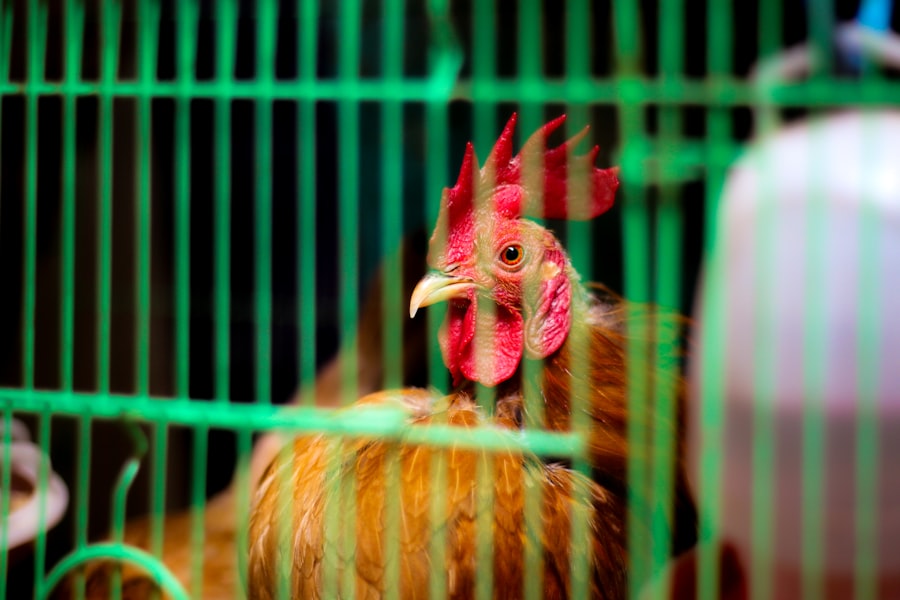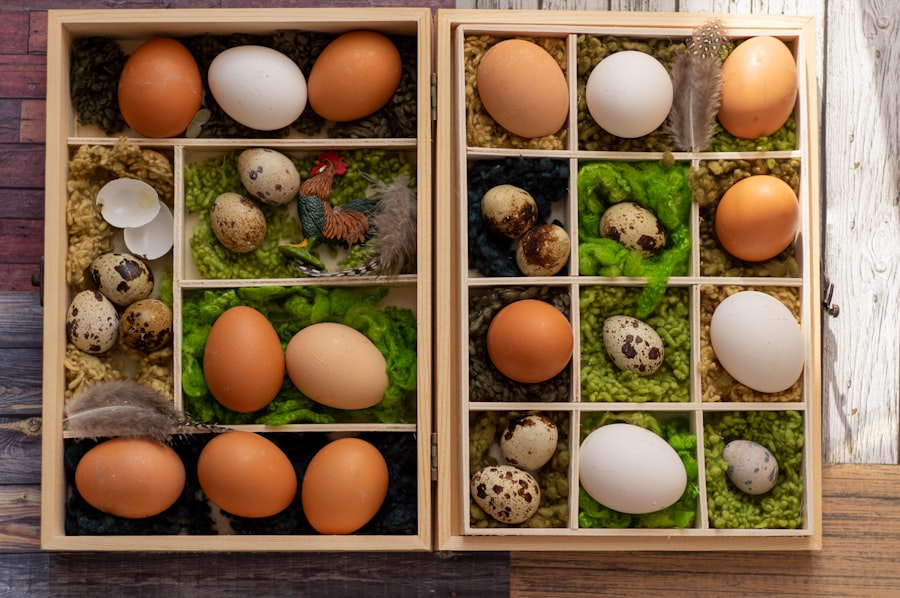Cats and chickens possess distinct behavioral traits that stem from their evolutionary backgrounds. Cats are solitary predators with a strong hunting instinct, territorial nature, and independent disposition. They exhibit curiosity and are naturally drawn to pursue small animals.
Chickens, conversely, are social creatures that thrive in flocks, establishing hierarchies within their groups. As prey animals, chickens are inherently cautious and easily startled. The predator-prey dynamic between cats and chickens is rooted in their instinctual behaviors.
Chickens have an innate fear of potential predators, including cats, as a survival mechanism. Cats, driven by their hunting instinct, may view chickens as potential prey. Recognizing these inherent behavioral patterns is essential when considering the coexistence of cats and chickens in the same environment.
To create a harmonious living situation for both species, it is crucial to understand and account for their natural tendencies. This knowledge allows for the implementation of appropriate measures to ensure the safety and well-being of both cats and chickens when they share a common space.
Table of Contents
- 1 Creating a Secure Environment for Chickens
- 2 Training Cats to Coexist with Chickens
- 3 Providing Adequate Entertainment for Cats
- 4 Implementing Deterrents to Keep Cats Away from Chickens
- 5 Supervising Cats and Chickens Interaction
- 6 Seeking Professional Help if Necessary
- 7 FAQs
- 7.1 What are some effective methods for keeping cats from killing chickens?
- 7.2 Why do cats kill chickens?
- 7.3 Are there any natural deterrents for keeping cats away from chickens?
- 7.4 Can training or behavior modification help prevent cats from killing chickens?
- 7.5 Are there any products specifically designed to keep cats away from chickens?
Key Takeaways
- Cats and chickens have different behaviors and understanding them is crucial for their coexistence
- Creating a secure environment for chickens is essential to protect them from potential harm
- Training cats to coexist with chickens can be achieved through positive reinforcement and patience
- Providing adequate entertainment for cats can help reduce their interest in chasing or harming chickens
- Implementing deterrents such as motion-activated sprinklers can help keep cats away from chickens and prevent potential conflicts
- Supervising the interaction between cats and chickens is important to ensure their safety
- Seeking professional help from animal behaviorists or trainers may be necessary if conflicts between cats and chickens persist
Creating a Secure Environment for Chickens
Creating a Safe Haven for Chickens
Protecting chickens from potential harm is crucial, and one of the main threats they face is predation by cats. To safeguard your flock, it’s essential to provide a secure environment that prevents cats and other predators from accessing them.
### A Sturdy and Predator-Proof Coop
A sturdy and predator-proof coop is vital for protecting chickens at night. The coop should have a secure door that can be closed to prevent predators, including cats, from entering. This will ensure that your chickens are safe and secure while they roost.
### A Secure and Enclosed Chicken Run
In addition to a secure coop, the chicken run should be enclosed with wire mesh to prevent cats from gaining access to the chickens during the day. This will prevent cats from jumping into the run or reaching through the fencing to grab your chickens.
### Providing Shelter and Hiding Spots
Providing adequate shelter and hiding spots is crucial for chickens to escape to if they feel threatened by a cat. This can include bushes, shrubs, or other structures that provide cover for the chickens to hide in. By creating a secure environment for chickens, you can help minimize the risk of potential conflicts with cats and other predators.
Training Cats to Coexist with Chickens

Training cats to coexist with chickens is possible with patience and consistency. It is important to start by introducing the cat to the chickens in a controlled environment, such as through a wire mesh barrier or from a safe distance. This allows the cat to observe the chickens without being able to harm them, which can help desensitize the cat to their presence.
Positive reinforcement can also be used to reward the cat for calm and non-aggressive behavior around the chickens. Additionally, providing the cat with plenty of mental and physical stimulation can help redirect their hunting instincts away from the chickens. This can include interactive toys, puzzle feeders, and regular play sessions to keep the cat mentally and physically engaged.
By providing outlets for their natural behaviors, you can help reduce the cat’s interest in hunting the chickens.
Providing Adequate Entertainment for Cats
Providing adequate entertainment for cats is essential in keeping them mentally stimulated and reducing their interest in hunting behaviors. Cats are natural hunters and need outlets for their predatory instincts. Interactive toys, such as feather wands and laser pointers, can provide mental and physical stimulation for cats while allowing them to engage in hunting-like behaviors in a safe and controlled manner.
Puzzle feeders can also be used to provide mental stimulation for cats while rewarding them for problem-solving. In addition to toys and puzzle feeders, providing vertical space for cats to climb and perch can help satisfy their natural instincts. Cat trees, shelves, and window perches can provide cats with opportunities to climb, explore, and observe their environment from a safe vantage point.
By providing adequate entertainment for cats, you can help redirect their hunting instincts away from the chickens and towards more appropriate outlets.
Implementing Deterrents to Keep Cats Away from Chickens
Implementing deterrents can help keep cats away from chickens and reduce the risk of potential conflicts. This can include using motion-activated sprinklers or ultrasonic devices near the chicken coop and run to deter cats from approaching. Additionally, applying natural deterrents such as citrus peels or coffee grounds around the perimeter of the chicken area can help repel cats due to their strong scent.
Creating physical barriers, such as chicken wire or netting, can also help prevent cats from gaining access to the chickens. Ensuring that the coop and run are securely enclosed with no gaps or openings that cats could squeeze through is essential in keeping the chickens safe from potential predators. By implementing deterrents and physical barriers, you can help create a safe environment for the chickens while deterring cats from approaching.
Supervising Cats and Chickens Interaction

Monitoring Initial Interactions
It is essential to closely monitor their interactions, especially during the initial introduction phase. This includes observing the cat’s body language and behavior around the chickens, as well as how the chickens respond to the cat’s presence.
Intervening in Case of Aggression
If any signs of aggression or stress are observed, it is vital to intervene and separate the animals to prevent any potential conflicts.
Promoting Positive Coexistence
Additionally, providing regular supervision allows you to intervene if necessary and correct any unwanted behaviors from either the cat or the chickens. By closely monitoring their interactions, you can help prevent any potential harm or stress to either animal while promoting positive and peaceful coexistence.
Seeking Professional Help if Necessary
Seeking professional help may be necessary if you are experiencing challenges in introducing cats and chickens or if there are ongoing conflicts between them. A professional animal behaviorist or trainer can provide guidance and support in creating a harmonious environment for both animals. They can assess the behavior of both the cat and the chickens and provide tailored recommendations for managing their interactions.
Additionally, consulting with a veterinarian can help address any underlying health issues that may be contributing to unwanted behaviors in either the cat or the chickens. Seeking professional help can provide valuable insights and strategies for promoting a peaceful coexistence between cats and chickens while ensuring their safety and well-being. In conclusion, understanding the behavior of cats and chickens is essential in creating a harmonious environment for them to coexist.
By providing a secure environment for chickens, training cats to coexist with chickens, providing adequate entertainment for cats, implementing deterrents, supervising their interactions, and seeking professional help if necessary, you can promote a peaceful coexistence between these two animals while ensuring their safety and well-being.
If you’re looking for more information on keeping chickens safe, you might be interested in this article on chicken coop portage. It offers tips on how to design and build a secure coop to protect your chickens from predators, including cats.
FAQs
What are some effective methods for keeping cats from killing chickens?
Some effective methods for keeping cats from killing chickens include keeping the chickens in a secure coop or run, using motion-activated sprinklers or deterrents, and providing distractions for the cats such as toys or food.
Why do cats kill chickens?
Cats are natural hunters and may see chickens as prey. They may also be attracted to the movement and sounds of the chickens, leading them to attack and kill them.
Are there any natural deterrents for keeping cats away from chickens?
Some natural deterrents for keeping cats away from chickens include planting strong-smelling herbs such as lavender or rosemary around the chicken coop, using citrus peels or essential oils, and creating barriers with prickly plants like holly or thorny bushes.
Can training or behavior modification help prevent cats from killing chickens?
Training and behavior modification can be effective in preventing cats from killing chickens. This may include using positive reinforcement to train the cats to stay away from the chickens, providing alternative hunting opportunities, and using deterrents to discourage unwanted behavior.
Are there any products specifically designed to keep cats away from chickens?
Yes, there are products specifically designed to keep cats away from chickens, such as motion-activated sprinklers, ultrasonic deterrents, and cat-proof fencing for the chicken coop or run. These products can help deter cats from approaching the chickens and reduce the risk of attacks.
Meet Walter, the feathered-friend fanatic of Florida! Nestled in the sunshine state, Walter struts through life with his feathered companions, clucking his way to happiness. With a coop that’s fancier than a five-star hotel, he’s the Don Juan of the chicken world. When he’s not teaching his hens to do the cha-cha, you’ll find him in a heated debate with his prized rooster, Sir Clucks-a-Lot. Walter’s poultry passion is no yolk; he’s the sunny-side-up guy you never knew you needed in your flock of friends!







